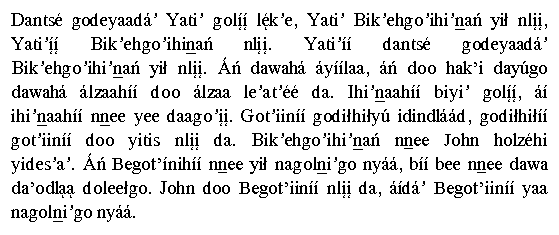By Sarah-Claire Jordan
 It has never been an easy task to classify all of the Native American tribes into specific groups in the U.S., so you can imagine the challenge it is to do the same with the different languages spoken among the tribes. As with many Native American tribes or nations, the Apache are actually made up of different tribal groups depending on the area. Because of this, there is no one “Apache” language, thus the term “Apachean” languages.
It has never been an easy task to classify all of the Native American tribes into specific groups in the U.S., so you can imagine the challenge it is to do the same with the different languages spoken among the tribes. As with many Native American tribes or nations, the Apache are actually made up of different tribal groups depending on the area. Because of this, there is no one “Apache” language, thus the term “Apachean” languages.
The Apachean languages are also known as the Southern Athabaskan languages. They are spoken where these tribes reside in the southwest of the United States, which includes states like Arizona, Colorado, New Mexico, and Utah, as well as the Mexican state of Sonora. The languages spoken by the tribes included in the Apache tribal group have been classified by linguist and anthropologist Harry Hoijer.
Hoijer organized the seven Apachean languages into two distinct categories: Southwestern and Plains. The Southwestern category is further divided into two subcategories: Western and Eastern. Under Western you have Chiricahua and Mescalero, Navajo, and Western or “Coyotero” Apache. Eastern includes Jicarilla and Lipan. The Plains Apache category is made up of the Plains Apache language and nothing more.
The way Hoijer classified the Southern Athabaskan/Apachean languages is based on the pronunciation of the first consonant in verb stems and nouns. At first, he had put Plains Apache in with Jicarilla and Lipan, eliminating the need for a Southwestern category. Later, he realized his mistake and fixed it. Many of the languages mentioned above are endangered to varying degrees, like Mescalero, Chiricahua, Jicarilla, and Western Apache. Of all the Apachean languages, Navajo is the healthiest linguistically speaking, though the number of young native speakers is still decreasing.
Unfortunately, most of the research on the phonologies of the Apachean languages focuses exclusively on Western Apache. However, there has been enough research to confirm that the languages also known as Southern Athabaskan do share very similar phonologies, so we can still make use of the research done with just Western Apache. There are four main vowels in these languages, though they can be further modified depending on tongue position and other characteristics. For example, in Jicarilla there are sixteen distinct vowels.
Unlike the languages brought over by most European colonists and settlers, South Athabaskan languages are tonal languages. There are four tones commonly used, which are called (in English) high, low, rising, and falling. You are more likely to hear high and low tones than rising and falling tones in any of these languages.
Though Navajo has been on many people’s radars since stories of Navajo “code talkers” have come to light, and given it is probably the most widely-spoken of the Apachean languages, it would be imprudent to focus exclusively on that language that is showing itself to be the most successful at surviving. The other languages of these tribes are just as important culturally, and it is important that we do what we can to preserve them and keep young speakers engaged and interested in them. If we lose all of them but Navajo, we will lose all but the Navajo legacy of those tribes and their histories.
For an overview of our multilingual Desktop Publishing services at Alpha Omega Translations, visit our Desktop Publishing and Design page



